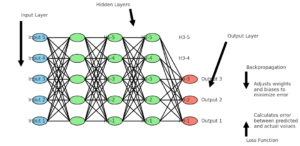How can crop rotation and polyculture improve soil health and crop yields?
Organic farming plays a crucial role in sustainable agriculture by promoting practices that enhance environmental health, biodiversity, and soil fertility while reducing dependency on synthetic inputs. It emphasizes the use of natural fertilizers like compost and manure, which enrich the soil with oRead more
Organic farming plays a crucial role in sustainable agriculture by promoting practices that enhance environmental health, biodiversity, and soil fertility while reducing dependency on synthetic inputs. It emphasizes the use of natural fertilizers like compost and manure, which enrich the soil with organic matter and nutrients, improving its structure and fertility over time. Organic farming avoids synthetic pesticides and herbicides, instead relying on natural pest control methods such as crop rotation, polyculture, and biological pest control. These practices reduce chemical runoff and pollution, protecting water sources and surrounding ecosystems. Additionally, organic farming supports biodiversity by creating habitats for various organisms, from soil microbes to beneficial insects and wildlife. By focusing on maintaining healthy soil, organic farming increases the soil’s ability to sequester carbon, helping mitigate climate change. The emphasis on local and seasonal production reduces the carbon footprint associated with transportation and supports local economies. Overall, organic farming fosters a more resilient agricultural system that can sustain long-term productivity while preserving environmental resources and promoting ecological balance.
See less

Crop rotation and polyculture significantly enhance soil health and crop yields through several mechanisms. Crop rotation involves alternating the types of crops grown in a particular area across different seasons or years. This practice helps prevent the depletion of specific soil nutrients, as difRead more
Crop rotation and polyculture significantly enhance soil health and crop yields through several mechanisms. Crop rotation involves alternating the types of crops grown in a particular area across different seasons or years. This practice helps prevent the depletion of specific soil nutrients, as different crops have varying nutrient requirements and contributions. Additionally, it disrupts the life cycles of pests and diseases specific to certain crops, reducing their prevalence and the need for chemical interventions. Polyculture, the simultaneous cultivation of multiple crop species, promotes biodiversity and fosters beneficial interactions among plants. This diversity enhances resilience against pests and diseases, as well as improves nutrient cycling and soil structure. Different root structures and plant residues contribute to better soil aeration and organic matter content, enhancing microbial activity and overall soil fertility. Both practices mitigate soil erosion by providing continuous ground cover, which protects the soil from wind and water erosion. Together, crop rotation and polyculture create a more balanced and sustainable agricultural system that maximizes productivity while maintaining and improving soil health, leading to more stable and increased crop yields over time.
See less